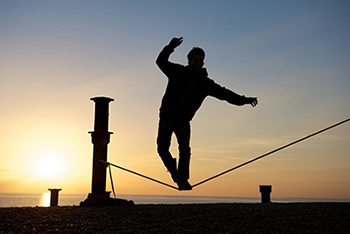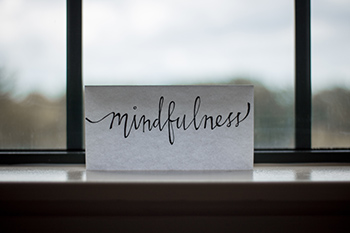Your Meditation Resource Center
All that you need to know, including how to find the practice that works for you (no, you don’t have to be able to seat still!)
We are what we think. All that we are arises with our thoughts. With our thoughts, we make the world.
Buddha
Why Would You Choose to Start Meditating?
The Science Behind the Benefits of a Meditation Practice
What is Mindfulness Meditation?
Is Mindfulness Meditation Difficult to Practice?
7 tips to support a regular meditation practice that can help (re)train your mind and literally change your life
Why Looking for a Private Instructor?
How Can I Help You?
Why Would You Choose to Start Meditating?
 The reasons we meditate are as varied as the many ways there are to meditate. In the West, most people are drawn to meditation to quiet the internal chatter of the brain and to reduce stress. Meditation is, indeed, a very effective stress reducer, but its benefits—sometimes mysteriously hidden—go far beyond this.
The reasons we meditate are as varied as the many ways there are to meditate. In the West, most people are drawn to meditation to quiet the internal chatter of the brain and to reduce stress. Meditation is, indeed, a very effective stress reducer, but its benefits—sometimes mysteriously hidden—go far beyond this.
Meditation is good for our bodies. Scientists gathering data on meditation have found that a consistent practice not only boosts the mind, but it also bolsters the body. Studies bear out that meditation can help reverse heart disease, reduce pain, and support the immune system, better enabling it to fight disease. The mind-body connection between stress and disease is abundantly apparent as science is finding that meditation can lower production of the stress hormone cortisol. This means meditators are better able to adapt to stress in their lives and its common physiologic responses, which can include: heart disease, osteoporosis, sleep problems, digestive problems, depression, etc. An increasing number of studies in neuroscience also shows how mindfulness meditation durably impacts the way the brain functions.
Because It’s Good for Our Relationships. Paradoxically, while meditation helps us tune in and turn inward to our true essence, it also helps us detach from our own egos to connect with others in more meaningful ways. Couples counselors have found when they assign their clients meditation, the couples become less angry, more self-reflective, and more loving. When we become aware of—and honor—our interconnection with other beings, we are able to recast our perspectives, see our worries in a different light, and embrace gratitude, which is the heart’s memory.
Because it Can Change Our Lives. In a world rife with never-ending fast fixes, crash diets, and get-rich-quick schemes, it’s nice to know there is a proven practice that really can change your life (or at least bring about dramatic effects) in just a little time in each day. Yogis and doctors both agree: meditating—even just a few minutes of deep breathing—relaxes the brain, reduces anxiety, and decreases depression. When we feel as though we can’t afford the time to meditate, the truth is we can’t afford not to.
The Science Behind the Benefits of a Meditation Practice
 Meditation as a way to focus a wandering mind
Meditation as a way to focus a wandering mind
Research increasingly shows the impact of a wandering mind on our quality of life, including our happiness. A new wave of research reveals what happens in our brains when our minds wander – and sheds light on the host of cognitive and emotional benefits that come with increased focus.
What Does Mindfulness Meditation Do to Your Brain?
Brain imaging techniques are revealing that this ancient practice can profoundly change the way different regions of the brain communicate with each other – and therefore how we think – permanently. In other words, it can actually “change” your brain.
Read this article to learn more and this one to get another account from yet another neuroscientist
How the Mind Can Heal the Heart
Read this article to learn about the science behind “mind whispering” — a technique for overcoming self-defeating habits of the mind.
What is Mindfulness Meditation?
 There is a wide range of meditation practices out there. None is better than the other. The best one is the one that will support you where you are. However, I have found mindfulness meditation (and mindfulness practices in general) particularly effective for my clients.
There is a wide range of meditation practices out there. None is better than the other. The best one is the one that will support you where you are. However, I have found mindfulness meditation (and mindfulness practices in general) particularly effective for my clients.
Mindfulness meditation is also calledVipassana,a Pali word referring to the ability to“see clearly”. It is generally translated in English by insight meditation as the simple and direct practice of moment-to-moment mindfulness (Satiin Pali). Through careful and sustained observation, we experience for ourselves the ever-changing flow of the mind/body process. This awareness leads us to accept more fully the pleasure and pain, fear and joy, sadness and happiness that life inevitably brings. As insight deepens, we develop greater equanimity and peace in the face of change, and wisdom and compassion increasingly become the guiding principles of our lives.
The Buddha first taught Vipassana over 2,500 years ago. The various methods of this practice have been well preserved in the Theravada tradition of Buddhism and have been transmitted to the West in the full spectrum of this tradition’s lineages.
Mindfulness Meditation Difficult to Practice?
Relative straightforwardness is what makes Vipassanaone of the most popular forms of meditation. It does not require laser-like focus and concentration. Unlike some other forms of meditation, there are no complicated breathing techniques to learn, no rigid postures to assume, and no mantras to remember. Presence and acceptance are the core requisites of Vipassana. With patience and guidance, anyone can learn how to incorporate this form of meditation into their daily life on a moment by moment basis.However, as with any meditation, mindfulness meditation requires practice and time.
7 tips to support a regular meditation practice that can help (re)train your mind and literally change your life
Tip #1: Make meditation part of your daily routine; regularity is more important than length
15 minutes per day are enough to make a difference as you allow yourself to pause and sit in peace and silence. In ways very similar to physical exercise, having a modest but regular practice is what will bring you the greatest benefits and actually help (re)train the mind. The effects of meditation are cumulative. Many schools of meditation prescribe 30 minutes of meditation twice a day, and as your meditation practice evolves, you can extend your time. It’s better to spend just a few minutes meditating every day rather than meditating for an hour a week. A weekly class / circle provides you with the support and desire to develop that little breath in your daily routine.
Tip #2: Find yourideal time to meditate
Morning and evening coincide with our body’s quieter rhythms. Our body knows how to be still; we just have to give it opportunity. Studies show that routines begun in the morning last the longest, but any time you look forward to meditating is the right time for you. To busy mothers, I often recommend to take a few moments in or after the shower in the morning as it might be their only quiet alone time at the beginning of the day. And I strongly encourage people working in stressful environments to pause regularly during their day and just come back to their breath in the body.
Tip #3: Create a special space for meditating at home
You don’t need much space. It can be a corner of a side table where you will place a candle, an image that you like, a few words that remind you of who you are and what is important for you. For people who work in stressful environments, I also sometimes recommend to bring an image, a stone, sometimes fresh flower on their desk and create that little corner of peace right by their computer. In both cases, the point is to have something that is going to function as a reminder to pause and check inward.
Tip #4: Find the position in which you will feel most comfortable
Being comfortable is most important. It is preferable to sit up straight on the floor or on a chair (with feet rooted in the ground) to help cultivate alertness, but if you are ill or feeling a lot of pain in your body, or need to lie down, that is fine. The mind has been conditioned to sleep when the body is lying down so you may feel sleepier. In all cases, you want to make sure that your body is open and that your position does not block any center of energy. Your hands can relax on your lap, palms up or any way that you feel most open.
Tip #5: Can’t stay still? Try walking meditation
Walking meditation is a very simple practice for developing calm, connectedness, and embodied awareness. Learning to be aware as you walk, to use the natural movement of walking to cultivate mindfulness and wakeful presence is as valuable as meditating seated on a cushion. If you struggle with meditating on your own or sitting still, or you want to expand the ways you can develop your awareness: read those guidelines by Jack Kornfield
Tip #6: Meditation is not about stopping our thoughts or trying to “empty” our mind
Thoughts are and will continue to drift in and that’s normal. Don’t try to do anything with them—let them be (like clouds in a blue sky). If you find yourself lost in them, very gently, without self judgment (don’t forget that one! the mere fact that you are actually aware that you are thinking is, in itself, a great breakthrough), just return your awareness on your breath (or on the mantra if you use one, or an image or a music). This is what allows the mind to progressively relax and center to the present moment. Then, with time, you will find the space, the quiet, the pause in between thoughts, the silence… It is pure presence and peace, right there.
Tip #7: Get back to your breath over and over
When we pay attention to our breath, we are in the present moment. Coming back to the breath in the body (particularly in a specific part of the body like the belly or the chest) will naturally help the mind to come back to the present moment and relax. In an unforced, natural rhythm, allow your breath to flow in and out, easily and effortlessly.
Why Looking for a Private Instructor?
 Both beginning and experienced meditators can benefit from the support of a meditation teacher. Getting started may seem simple, but maintaining a practice is another story. It is helpful to have a teacher or guide to coach, motivate, and encourage you along as you start. There are many apps out there to help but nothing can replace having a real, live person guiding you to find the practice that will work for you, and then teaching you how to get started.
Both beginning and experienced meditators can benefit from the support of a meditation teacher. Getting started may seem simple, but maintaining a practice is another story. It is helpful to have a teacher or guide to coach, motivate, and encourage you along as you start. There are many apps out there to help but nothing can replace having a real, live person guiding you to find the practice that will work for you, and then teaching you how to get started.
Once you have started, you may also choose to attend regular meditation classes/circles to simply have a weekly group with whom to meditate on a regular basis.
How Can I Help You?
As a shamanic healer and spiritual mentor, I help my clients find the modality that works best for them.
I also offer instruction and guidance as a gradual training providing skillful ways to quiet the mind, develop awareness, come back to the present moment, and nurture and transform ourselves. Those techniques can be easily included in any practice and daily routine.
I generally also include techniques and practices that are directed towards the development of the qualities of the Heart(Metta/ Lovingkindness meditation for Gratitude and Compassion in particular).
I have studied Mindfulness meditation with Madison Jones, Sharon Salzberg, Tara Brach, Christina Feldman, PemaChödrön and other wonderful teachers who have brought that tradition to the West. Practicing meditation has literally saved my life and I have seen its deep supportive and transformative effect on many of my clients.This is why I have decided to pass on the teaching as an offering to others who might benefit from it.
